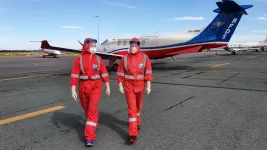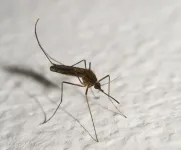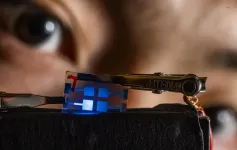(Press-News.org) New data released this week by Australian researchers reveals the impact of the COVID-19 lockdown period on aeromedical retrievals in rural and remote regions.
Researchers say while the social isolation measures led to a reduction in overall aeromedical activity during the lockdown in 2020, once the restrictions were lifted, evacuations increased significantly.
These findings are published in the Internal Medicine Journal, comparing aeromedical evacuation trends in Australia during the pre-restriction, lockdown and post-restriction periods last year.
Australian researchers, including Royal Flying Doctor Service (RFDS) Director of Public Health and Research, Dr Fergus Gardiner, and Dr Marianne Gillam from the University of South Australia (UniSA), say fewer aeromedical retrievals were carried out during the lockdown, but the proportion of vulnerable infants and adults with heart conditions who were evacuated was much higher.
"This may reflect patients delaying early intervention due to social isolation measures and limitations in accessing primary healthcare and cardiac services," Dr Gardiner says.
Limited access to local cardiac surgeons in remote regions between March and May 2020 led to a spike in RFDS aeromedical retrievals for babies with congenital malformations, as well as adults with heart conditions.
Almost 17,000 aeromedical retrievals were undertaken in the first half of 2020, a drop of 1144 compared to the same period in 2019, with heart patients comprising 18 per cent of the evacuations, injuries accounting for 16 per cent and diseases of the digestive system 9 per cent.
Dr Gardiner says 230 patients suspected of having COVID-19 and six confirmed cases were among those evacuated from remote regions in 2020, mostly during the lockdown period.
"It should be noted that none of the areas where these suspected COVID cases were evacuated had pathology testing services," he says.
Fewer cancer patients were evacuated but retrievals increased significantly once the social isolation measures were lifted.
"Many oncologists within Australia only performed essential treatments during the lockdown, mainly because their cancer patients were more immunocompromised and leaving their homes would have left them more exposed to infection," Dr Gillam says.
"Oncologists had to weigh the risks of death from COVID-19 against the benefits of cancer therapy and these risks are amplified during aeromedical retrieval."
Reductions in metabolic and respiratory diseases as well as skin infections, attributed to improved hygiene and social isolation during 2020, were also reflected in the aeromedical statistics.
"Future research needs to consider social isolation trends in primary healthcare settings," Dr Gillam says.
INFORMATION:
Notes to editors
Data for aeromedical retrievals was taken from three periods: pre-lockdown (28 January to 15 March 2020); lockdown (16 March to 4 May 2020) and post-lockdown (5 May to 23 June 2020).
"Aeromedical retrieval diagnostic trends during a period of Coronavirus lockdown" is published in Internal Medicine Journal. It was selected as the editor's choice paper in the most recent edition.
Researchers from the RFDS, University of South Australia, University of Western Australia, University of Melbourne and Department of Rural Health in SA, WA and Queensland were involved in the study.
A Simon Fraser University study on public perceptions of police officers wearing personal protective equipment (PPE) during the current pandemic finds that most PPE renders positive perceptions of police, while some equipment, including full-face respirator masks, may be viewed more negatively. The research was published January 9 in the Journal of Experimental Criminology.
Led by SFU criminology assistant professor Rylan Simpson and MA student Ryan Sandrin, the online experimental study drew on a sample of 117 participants residing in North America. The participants were randomly assigned to read one of three fictitious news articles that were either pro-PPE (highlighting health benefits), neutral or anti-PPE (lacking health benefits). Participants were then asked to rate 12 ...
The Granzyme B (GzmB) enzyme, which accumulates in certain tissues as we age, has been identified as a driver of itchy and sometimes life-threatening autoimmune conditions known as pemphigoid diseases (PDs), which cause blistering and skin erosion below the skin's surface.
New research led by University of British Columbia (UBC) and Vancouver Coastal Health Research Institute (VCHRI) scientists has found that a gel containing a specific and potent inhibitor of GzmB activity, VTI-1002, resulted in significant improvements on skin affected by PDs.
"Blisters caused by these conditions can be extremely discomforting, unsightly and ...
A proton exchange membrane fuel cell is a chemical cell that converts energy released when a substance reacts into electrical energy with zero emission. It is an excellent substitute for fossil fuel.
However, low activity and stability of the Pt-based catalysts in the oxygen reduction reaction (ORR) of the battery cathode restricted the output power and the number of charge and discharge cycles, thus increasing the cost of the whole fuel cells. The preparation of cathode catalysts with high activity and stability is a difficult problem.
In a study ...
Durham, NC - A new study reported in STEM CELLS reveals a unique population of skeletal stem cells (SSCs) that function during the transitional period between rapid bone growth and bone maintenance. This discovery provides an opportunity to determine whether alterations in the SSCs' pattern might affect bone formation, as well as helps us understand the physiological factors that regulate its timing.
"This is particularly important given that anything that interferes with the proper development of bone mass during childhood and adolescence has long-lasting effects on our health, including the development of osteoporosis ...
BINGHAMTON, NY -- A new leader takes office and foreign rivals begin to test the waters. How tough is this new leader? Are they willing to risk war, or just full of bluster?
This testing can escalate crises, increasing the risk of war as international adversaries gauge the new leader's willingness to use force. A new paper co-written by faculty at Binghamton University, State University of New York shows that when this "turnover trap" occurs depends a good deal on the politics back home, and the nature of the leader's transition into office.
Binghamton University Associate Professor of Political Science Amanda Licht was among ...
AURORA, Colo. (Jan. 13, 2021) - Mucus in the lungs can be fatal for asthma patients, but scientists at the University of Colorado Anschutz Medical Campus have broken up those secretions at the molecular level and reversed their often deadly impacts.
In a study published Monday in the journal Nature Communications, the researchers explained how they created an inhaled treatment that disrupted the production of excess mucus by reducing disulfide bonds in mice and opening up their airways. The same treatment had similar impacts on human mucus samples.
"Currently about 10% of the population has asthma," said the study's lead author Christopher Evans, PhD, professor of Pulmonary Sciences & Critical ...
A common bacterial species naturally infecting mosquitoes may actually be protecting them against specific mosquito pesticides, a study has found.
Wolbachia - a bacterium that occurs naturally and spreads between insects - has become more frequently used in recent years as a means of controlling mosquito populations.
Scientists at the University of Reading, and the INBIOTEC-CONICET and the National University of San Juan in Argentina, studied the effect of Wolbachia on a common mosquito species and found those carrying the bacteria were less susceptible to widely used pesticides.
Dr Alejandra Perotti, an Associate Professor in invertebrate biology at the University of Reading, and a co-author of the study, said: "This shows the importance of looking more ...
Without immediate and drastic intervention, humans face a "ghastly future" -- including declining health, climate devastation, tens of millions of environmental migrants and more pandemics -- in the next several decades, according to an international team of 17 prominent scientists. ...
Researchers at Linköping University, Sweden, have developed efficient blue light-emitting diodes based on halide perovskites. "We are very excited about this breakthrough", says Feng Gao, professor at Linköping University. The new LEDs may open the way to cheap and energy-efficient illumination.
Illumination is responsible for approximately 20% of global electricity consumption, a figure that could be reduced to 5% if all light sources consisted of light-emitting diodes (LEDs). The blue-white LEDs currently in use, however, need complicated manufacturing methods and are expensive, which makes it more difficult to achieve ...
Atomic nuclei are held together by the strong interaction between neutrons and protons. About ten percent of all known nuclei are stable. Starting from these stable isotopes, nuclei become increasingly unstable as neutrons are added or removed, until neutrons can no longer bind to the nucleus and "drip" out. This limit of existence, the so-called neutron "dripline", has so far been discovered experimentally only for light elements up to neon. Understanding the neutron dripline and the structure of neutron-rich nuclei also plays a key role in the research program for the future accelerator facility FAIR at the GSI Helmholtz Centre for Heavy Ion Research in Darmstadt.
In a new study, "Ab Initio Limits of Nuclei," ...



